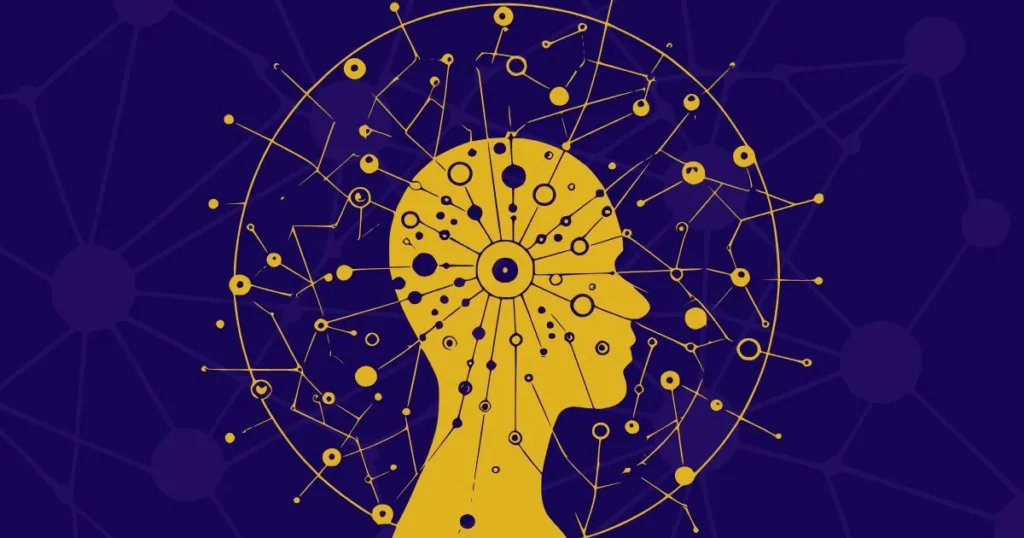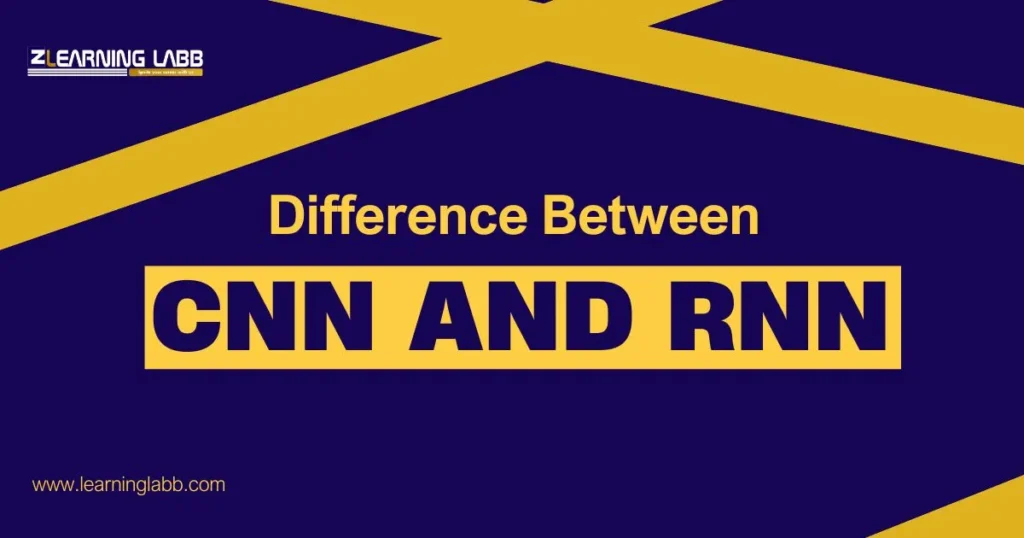Difference Between CNN and RNN: With the rapid growth of artificial intelligence (AI) and deep learning, neural networks have become the foundation of many technological advancements. Whether it’s image recognition, voice assistants, self-driving cars, or chatbots, AI relies on different types of neural networks to process data efficiently. Two of the most important types are:
- CNN (Convolutional Neural Network)
- RNN (Recurrent Neural Network)
Understanding the difference between CNN and RNN is essential for anyone studying AI or working in data science. While both are neural networks, their architecture, functionality, and applications are different.
In this article, we will cover:
- What is CNN and RNN?
- How do CNN and RNN work?
- The major differences between CNN and RNN
- Use cases and applications
- The role of CNN and RNN in soft computing
- Where to learn CNN and RNN in machine learning
By the end of this blog, you will have a clear understanding of CNN and RNN in machine learning and how they are shaping the future of AI.

What is CNN and RNN?
Before we compare CNN and RNN, let’s define them and understand their full forms.
What is CNN (Convolutional Neural Network)?
CNN, or Convolutional Neural Network, is a deep learning model designed to process visual data such as images and videos. CNNs are mainly used in computer vision applications where AI needs to recognize patterns, textures, and objects in an image.
How CNN Works:
CNNs use a special mathematical operation called convolution, which helps in extracting important features from an image. The architecture of a CNN consists of multiple layers:
- Convolutional Layer: Detects simple patterns like edges and corners.
- Pooling Layer: Reduces the size of the image without losing key features.
- Fully Connected Layer: Interprets the extracted features and classifies the image.
Key Features of CNN:
- Excellent at processing spatial data (images, videos).
- Uses filters and kernels to detect features like edges, textures, and colors.
- Works well with large datasets for image classification.
Applications of CNN:
- Facial Recognition: Unlocking smartphones using Face ID.
- Medical Imaging: Detecting diseases in MRI or X-ray scans.
- Self-Driving Cars: Identifying road signs and obstacles.
- Security Surveillance: Recognizing people and suspicious activity.
What is RNN (Recurrent Neural Network)?
RNN, or Recurrent Neural Network, is designed to process sequential data, such as text, speech, or time-series data. Unlike CNNs, which process data independently, RNNs retain information from previous inputs, making them ideal for tasks that involve patterns over time.
How RNN Works:
The main feature of an RNN is its recurrent connection, which allows it to remember previous inputs and use them to predict the next step. The architecture includes:
- Input Layer: Takes sequential data as input.
- Hidden Layers with Loops: Stores memory from previous steps.
- Output Layer: Predicts the next word, number, or sequence based on past data.
Key Features of RNN:
- Ideal for time-dependent tasks (e.g., predicting the next word in a sentence).
- Uses feedback loops to retain memory.
- Can handle variable-length sequences (e.g., translating long sentences).
Applications of RNN:
- Chatbots & Virtual Assistants: AI-powered conversations.
- Speech Recognition: Siri, Google Assistant, and voice typing.
- Machine Translation: Google Translate converting text between languages.
- Stock Market Predictions: Analyzing financial trends over time.
Key Differences Between CNN and RNN
| Feature | CNN (Convolutional Neural Network) | RNN (Recurrent Neural Network) |
| Purpose | Best for image and video processing | Best for sequential data (text, speech, time series) |
| Architecture | Uses convolutional layers to detect spatial features | Uses recurrent connections to retain memory |
| Memory Handling | Does not retain past data | Remembers previous inputs |
| Processing Type | Processes spatial information | Processes temporal information |
| Best Use Cases | Computer vision applications | Natural Language Processing (NLP) applications |
CNN and RNN in Soft Computing
Soft computing is a branch of AI that allows machines to process uncertain or imprecise data, mimicking human decision-making. CNN and RNN play crucial roles in soft computing applications.
CNN in Soft Computing:
- AI-based image enhancement tools
- Medical disease detection using deep learning
- AI-driven self-driving technology
RNN in Soft Computing:
- AI chatbots for real-time conversations
- AI-generated text and music
- AI-driven predictive analytics
How CNN is Used in Soft Computing
CNN is a type of deep learning model that excels at image processing, pattern recognition, and object detection. Since CNNs automatically extract features from images, they are widely used in applications requiring visual data analysis.
1. AI-Based Image Processing and Enhancement
CNN models improve image quality by removing noise, increasing resolution, and restoring damaged images.
- Photo Restoration: AI-powered tools can reconstruct missing details in blurry or old photographs.
- Satellite Image Analysis: CNN models help analyze satellite images for weather forecasting, disaster management, and land mapping.
2. Medical Diagnosis and Disease Detection
CNNs assist in medical imaging by analyzing X-rays, CT scans, and MRIs to detect abnormalities such as tumors, fractures, and infections.
- Cancer Detection: AI models trained with CNNs can identify tumors in medical scans with high accuracy.
- COVID-19 Diagnosis: During the pandemic, CNN-based models were developed to detect COVID-19 infections from lung X-rays.
3. Self-Driving Cars and Autonomous Navigation
CNNs process real-time visual data from cameras and sensors to help autonomous vehicles detect and classify objects.
- Object Detection in Self-Driving Cars: AI-powered vehicles recognize pedestrians, traffic signs, and road obstacles.
- Lane Detection: CNNs identify road markings to keep self-driving cars within their lanes.

How RNN is Used in Soft Computing
RNNs process sequential and time-series data, making them valuable in applications that require AI to remember past information and predict future patterns.
1. AI-Powered Chatbots and Virtual Assistants
RNNs enable chatbots and AI assistants to remember previous conversations and provide relevant responses.
- Customer Support Chatbots: AI-powered chatbots can handle customer inquiries, suggest solutions, and even complete transactions.
- Virtual Assistants: Voice assistants like Siri and Google Assistant use RNNs to understand speech, process commands, and respond intelligently.
2. Predictive Analytics and Forecasting
RNNs analyze past data to predict future trends, making them useful in business intelligence, finance, and climate modeling.
- Stock Market Prediction: AI models track historical stock prices to forecast future price movements.
- Weather Forecasting: Meteorological departments use RNNs to predict temperature, rainfall, and storm patterns.
3. AI-Generated Text and Speech Recognition
RNNs help AI understand and generate human-like text and speech.
- Text Prediction and Autocorrect: AI-powered keyboards suggest words based on context.
- Speech-to-Text Conversion: RNN models convert spoken words into text, making them useful for transcription services and voice typing.
Key Differences Between CNN and RNN in Soft Computing
| Feature | CNN in Soft Computing | RNN in Soft Computing |
| Type of Data Processed | Spatial data (images, videos) | Sequential data (text, speech, time series) |
| Main Function | Recognizes objects and patterns in images | Understands patterns over time |
| Use Cases | Medical imaging, self-driving cars, security surveillance | Chatbots, stock market predictions, speech recognition |
| Memory Handling | Processes each input independently | Stores memory from previous inputs |
Learn CNN and RNN with Ze Learning Labb
If you want to build a career in AI, learning CNN and RNN is essential. Ze Learning Labb offers practical courses in:
- Data Science (Deep learning, AI models)
- Data Analytics (Predictive modeling, machine learning)
- Digital Marketing (AI-powered SEO, ad targeting)
Why Choose Ze Learning Labb?
- Hands-on projects
- Industry-expert trainers
- Affordable fees
- Industry-recognized certification
Start your AI journey today! Check out Ze Learning Labb’s courses on Data Science, Data Analytics, and Digital Marketing.
On A Final Note…
Understanding the difference between CNN and RNN is important for anyone interested in AI, machine learning, or deep learning. While CNNs excel at processing images and videos, RNNs are ideal for analyzing sequential data.
If you want to specialize in AI and deep learning, check out Ze Learning Labb’s Data Science courses to master CNN and RNN.





